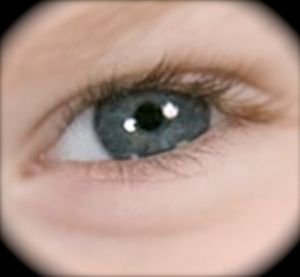It never fails, at least once a week we see a patient in our clinic that complains about one, and occasionally both, of their eyelids “jumping” or “twitching” for no apparent reason. Many times the twitching becomes so pronounced that a patient may become concerned that something may be wrong. This twitching is a condition called a blepharospasm.
What is a blepharospasm?
A blepharospasm is a common condition in which the eyelids spasm or blink involuntary. Blepharospasms typically begin without any warning and may be caused by fatigue, stress, and exposure and/or sensitivity to bright lights. In very rare cases, a genetic family trait may play a role.
Symptoms of a blepharospasm are the not limited to the twitching and jumping of one or both eyelids, but could involve an increased blink response as well as eye irritation. In severe cases blepharospasms may cause a patient to decrease activities they enjoy such as reading or working on a computer.
Is it a sign of something really wrong with the eye?
While annoying, a blepharospasm is not generally a sign or symptom of an underlying ocular problem. A patient experiencing repeated spasms should be aware that it might expand beyond the eyelids and cause facial twitching.
How is it treated?
The easiest treatment for blepharospasms is to reduce the causal factors, i.e.: stress, fatigue, etc. In addition, the spasms will decrease if a person concentrates strongly on a task, or when they sleep. There have been some cases in which some patients found relief by using alternative treatments such as hypnosis, acupuncture, and nutritional therapies.
Many physicians have turned to treating the twitching and jumping of blepharospasms by injecting the muscles of the eyelids with a botulinum toxin, more often known by the pharmaceutical name Botox. This is only a temporary fix and is often expensive and not covered by insurance, however for people who need instant relief, the botulinum toxin is a good option.
There are other medications that can be taken orally, although the results are often unpredictable and statistically help in very few cases.
The final and most invasive treatment for a blepharospasm is a surgery called myectomy. In this procedure an ophthalmic plastic surgeon removes some of the muscles and nerves in the eyelid. This is an effective treatment and will permanently stop the twitching, however it is a surgery and is not without risk. Only a physician experienced in this procedure should consulted to perform the procedure.
While annoying blepharospasms are not a threat to ocular health or a persons eye sight. Often times they can be managed without any invasive or painful treatments. Patients who feel their spasms are increasing or that they are unable to manage the twitching on their own, they should seek the advice of their ophthalmologist who can offer the best path to relief.
